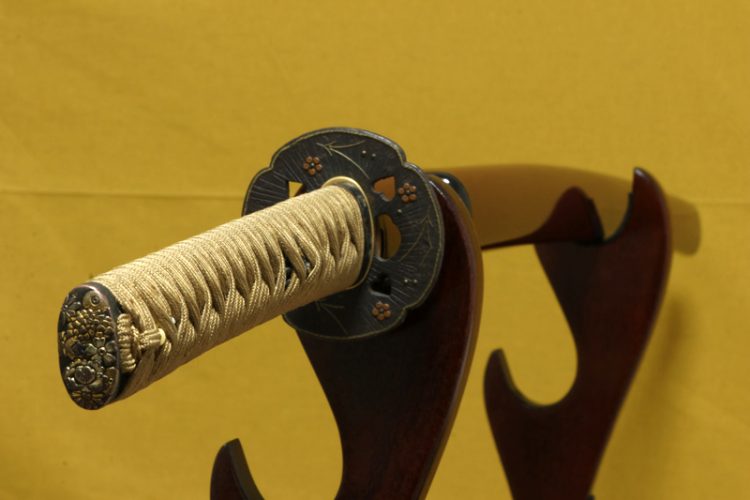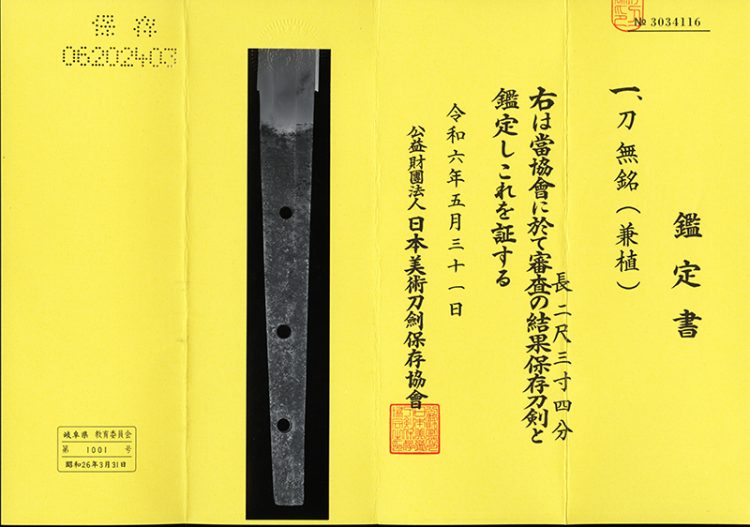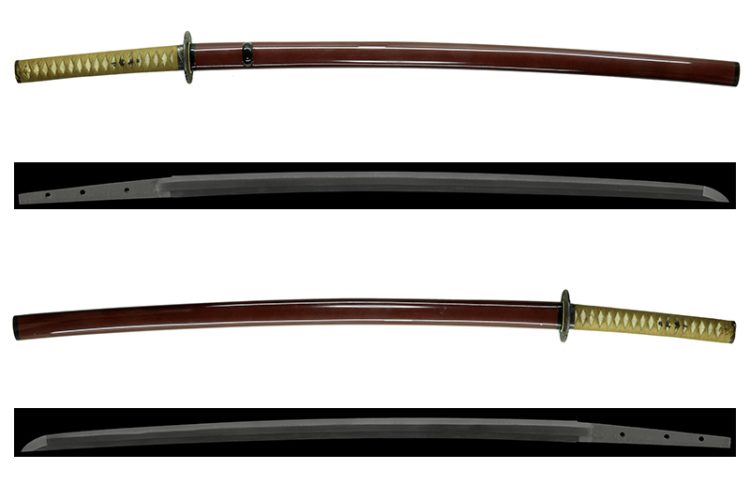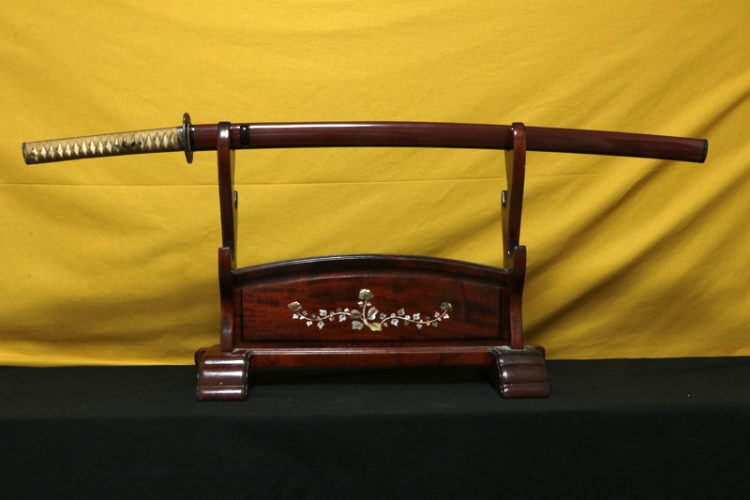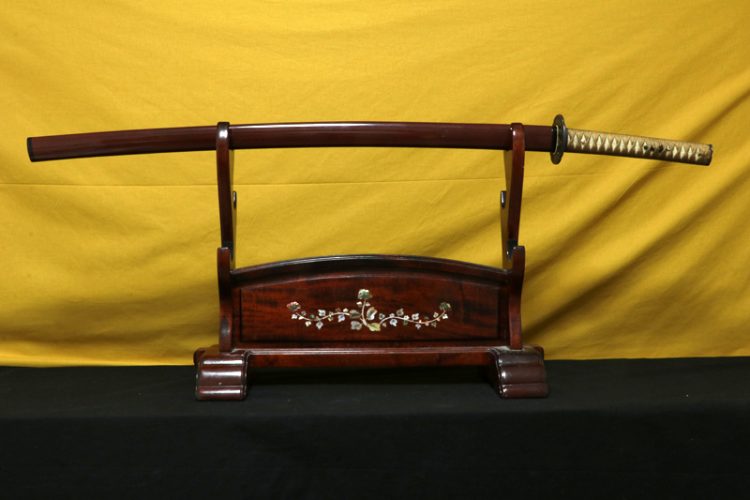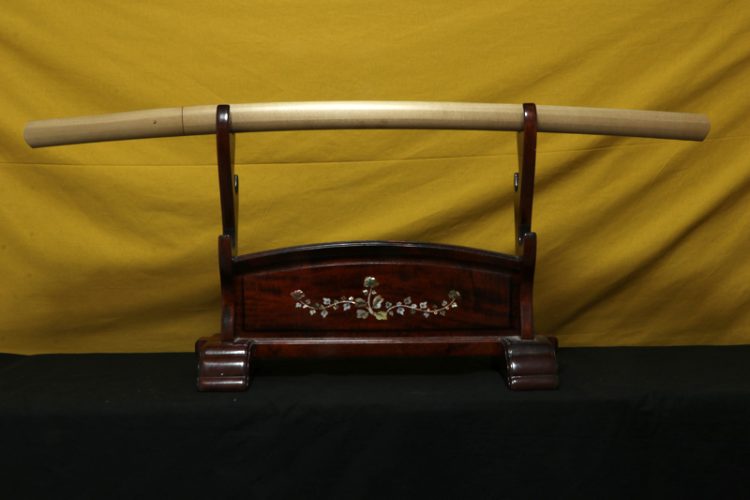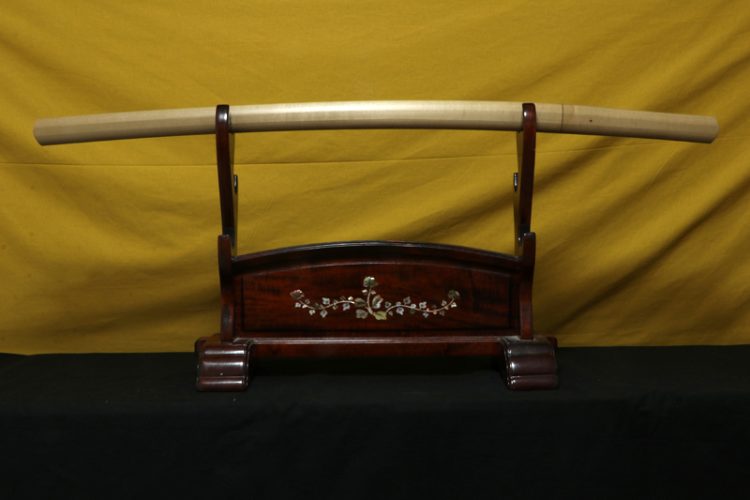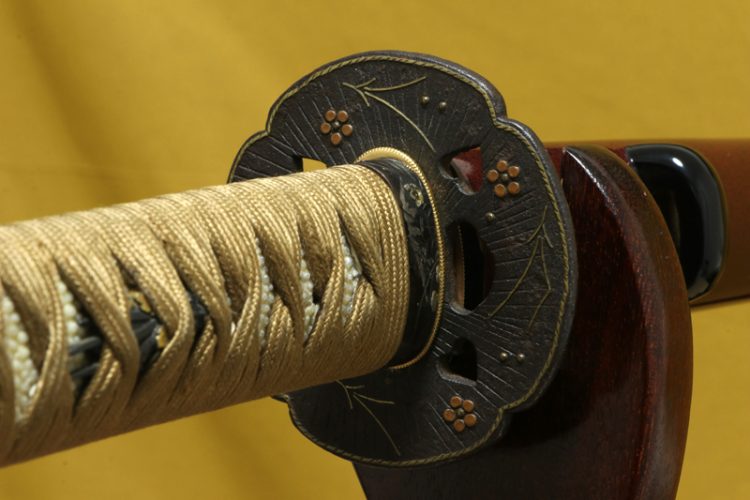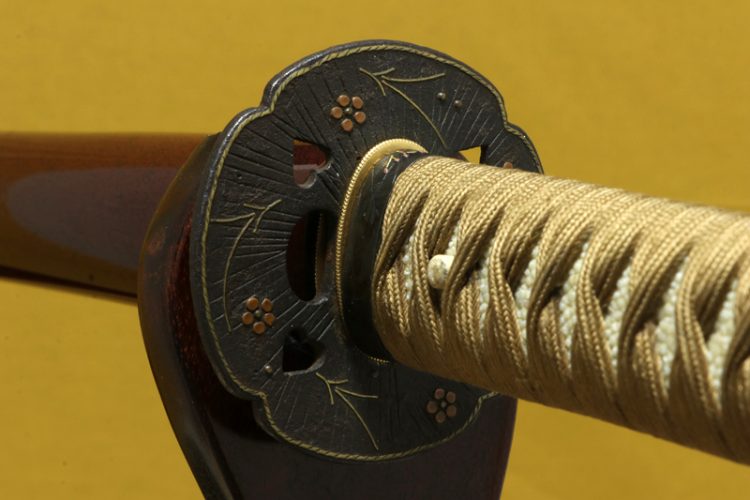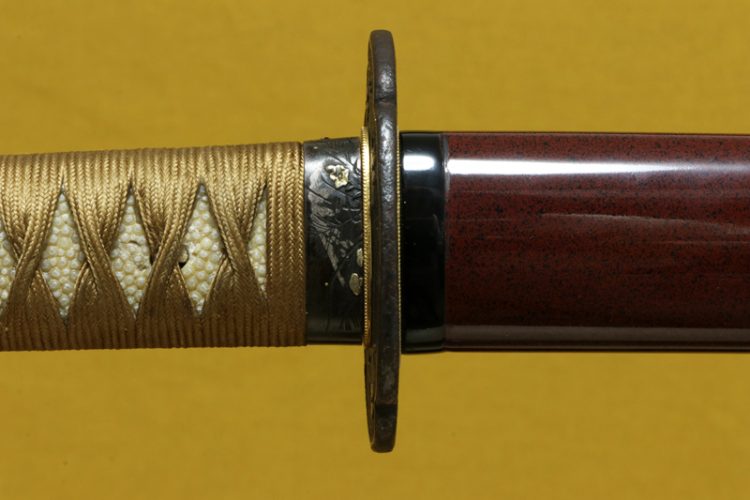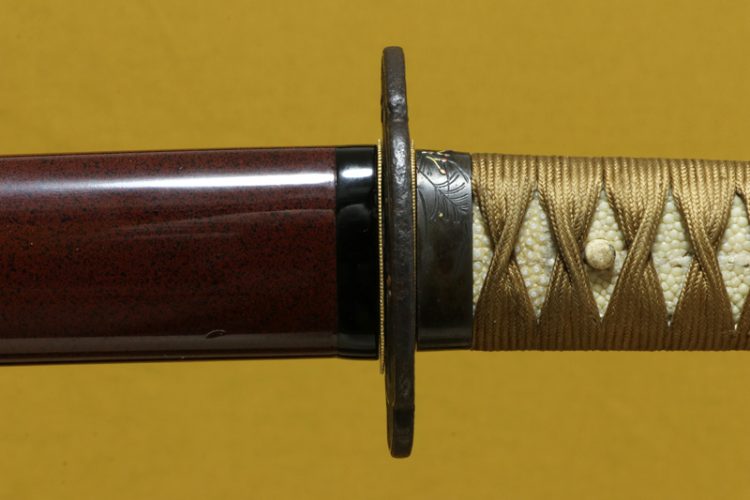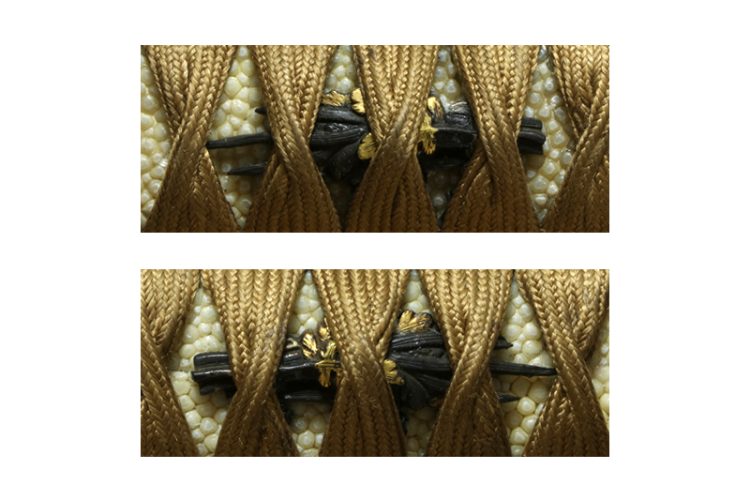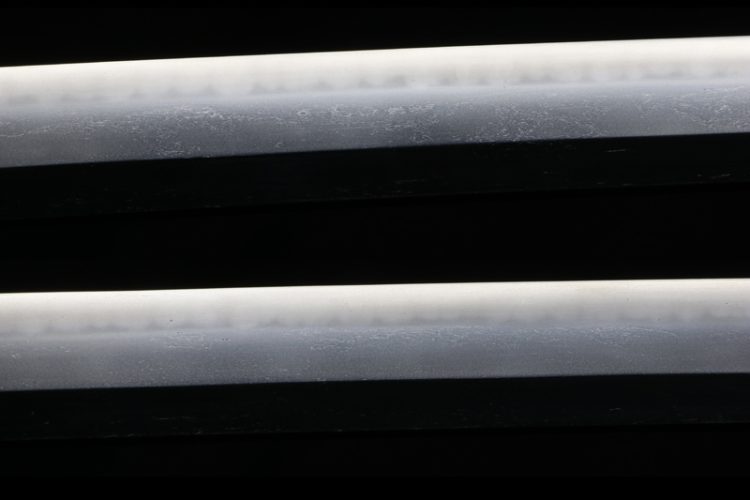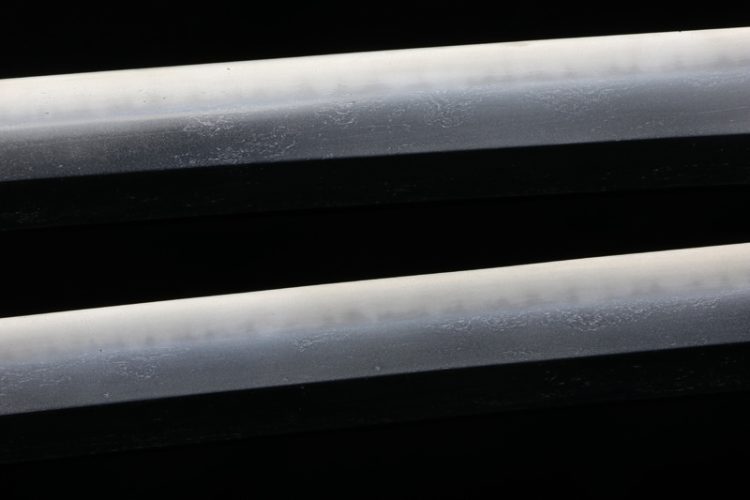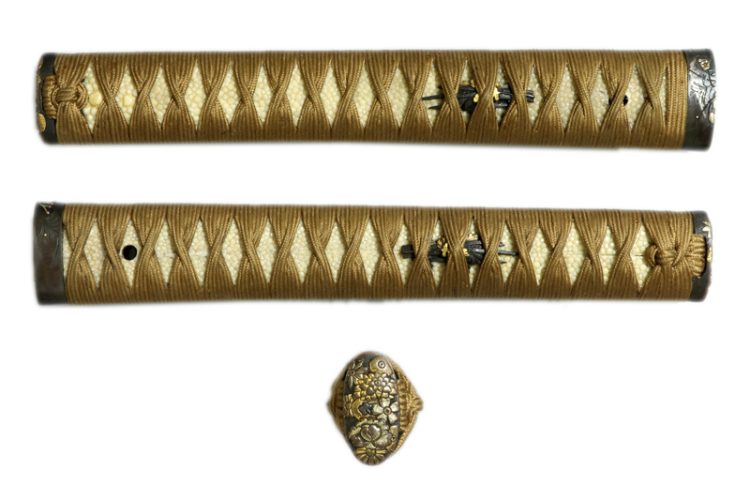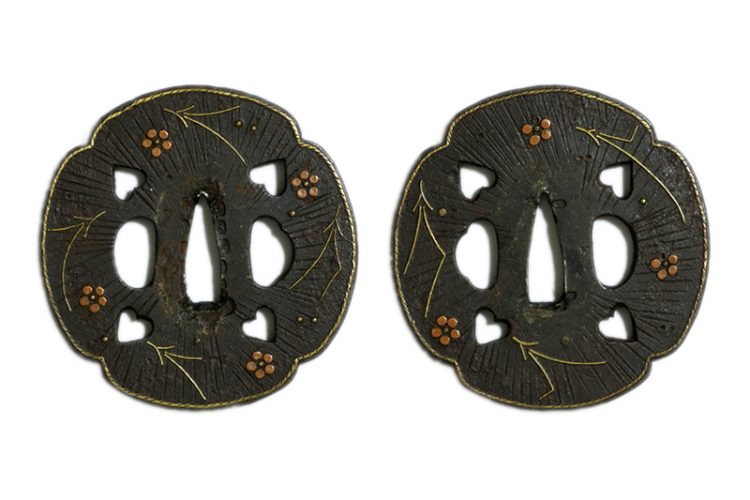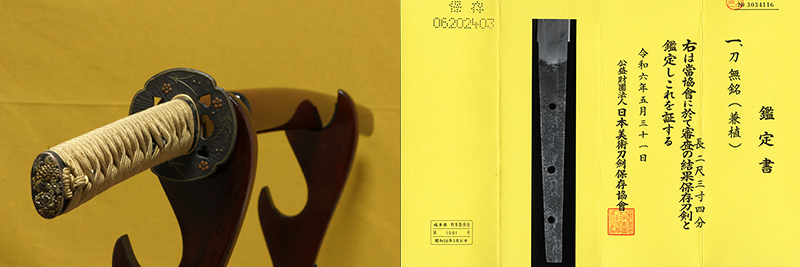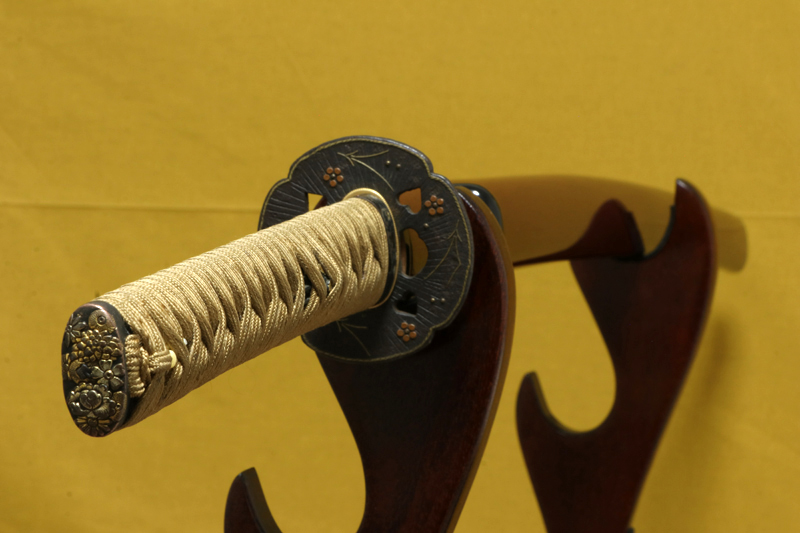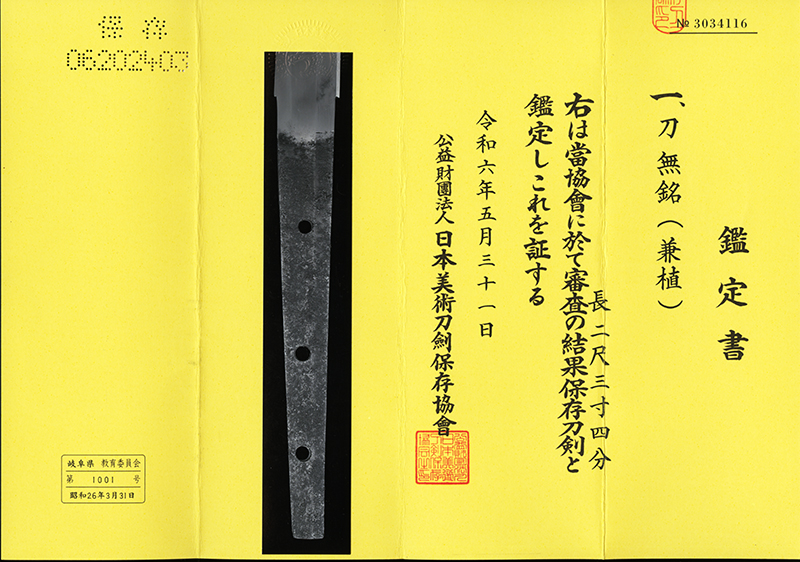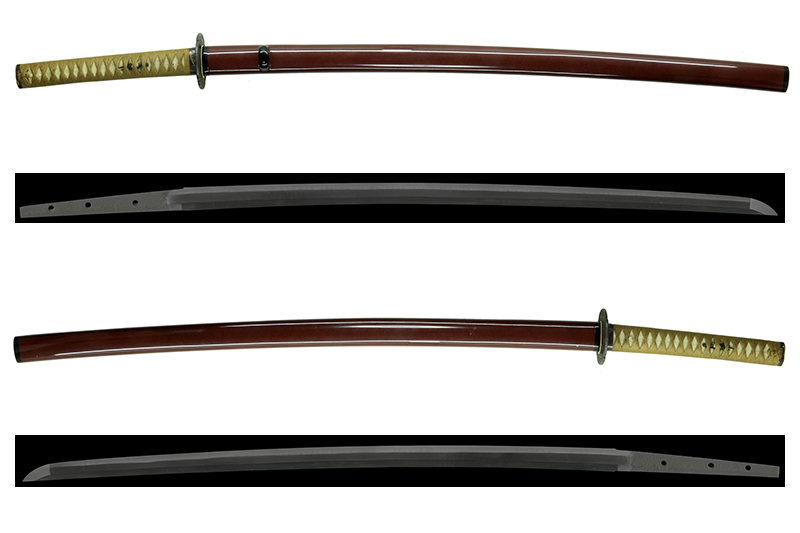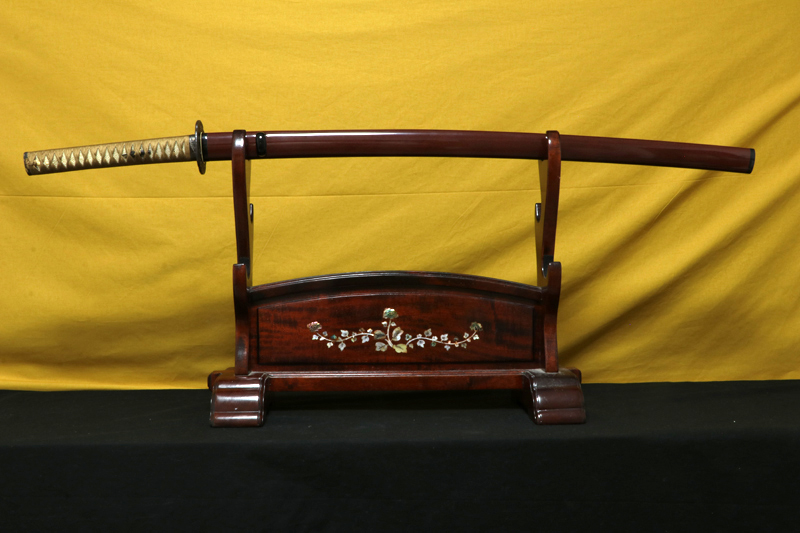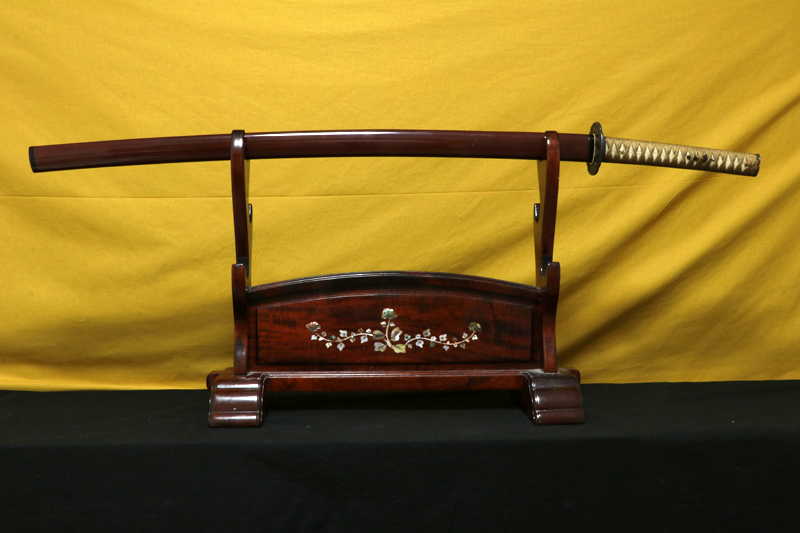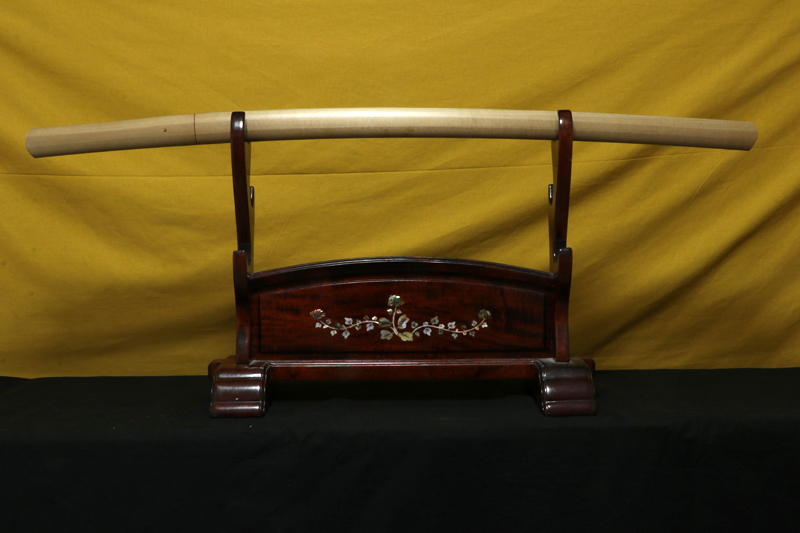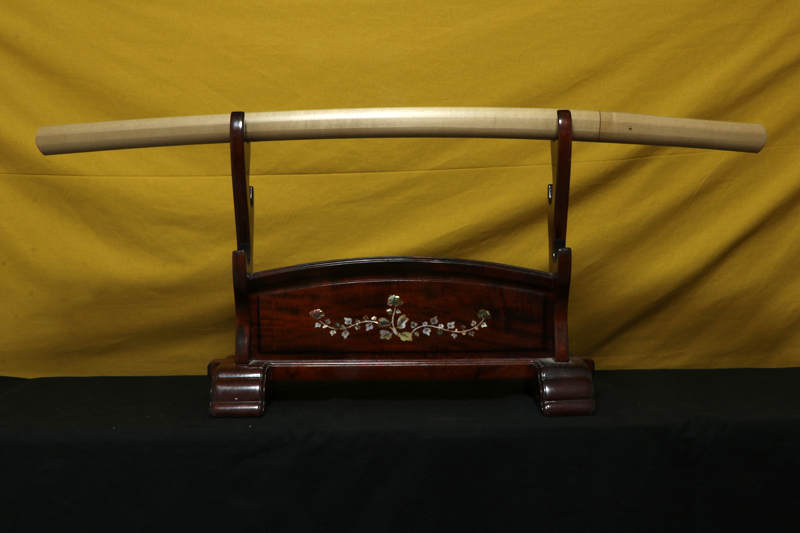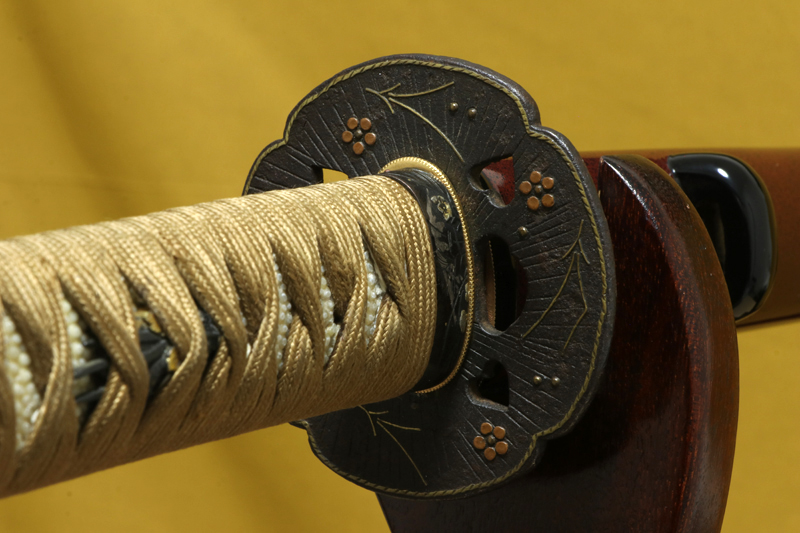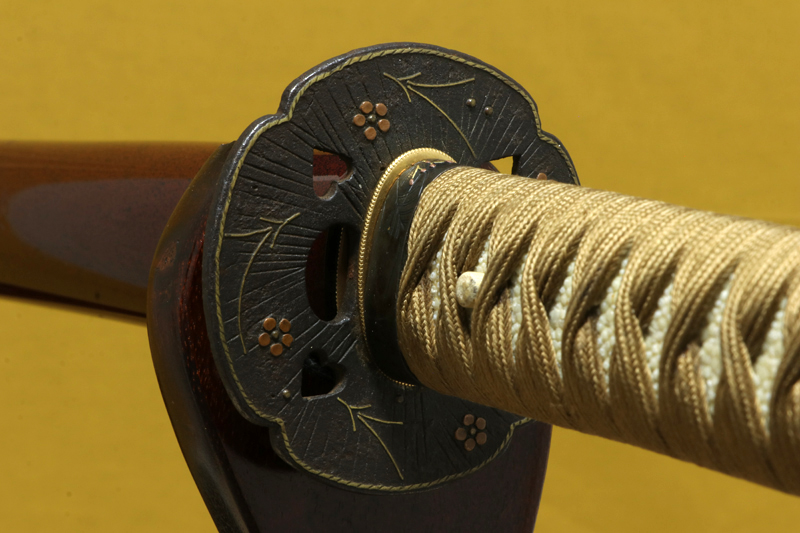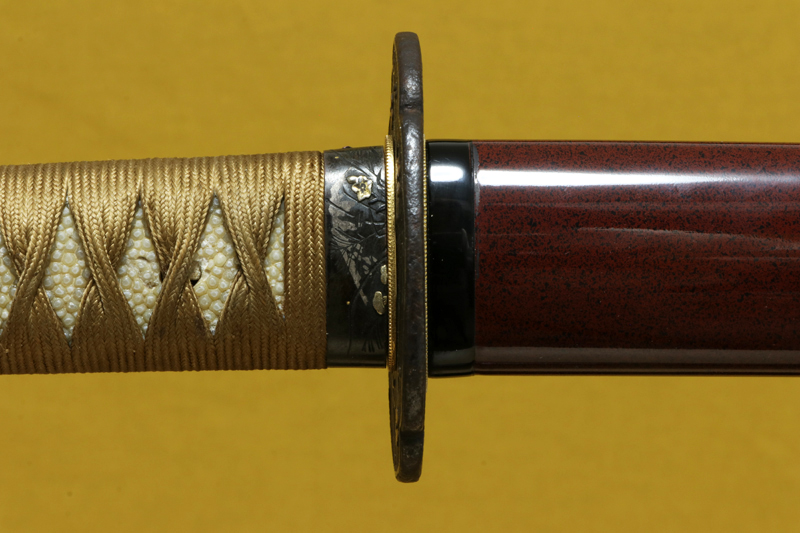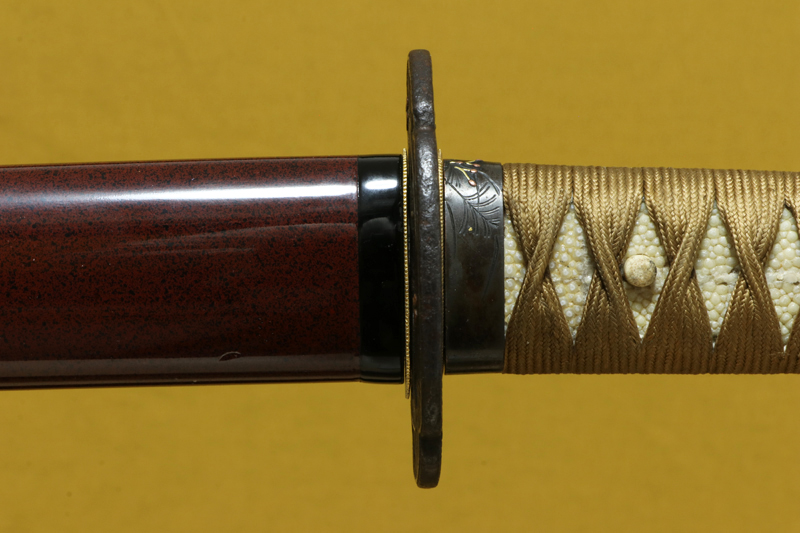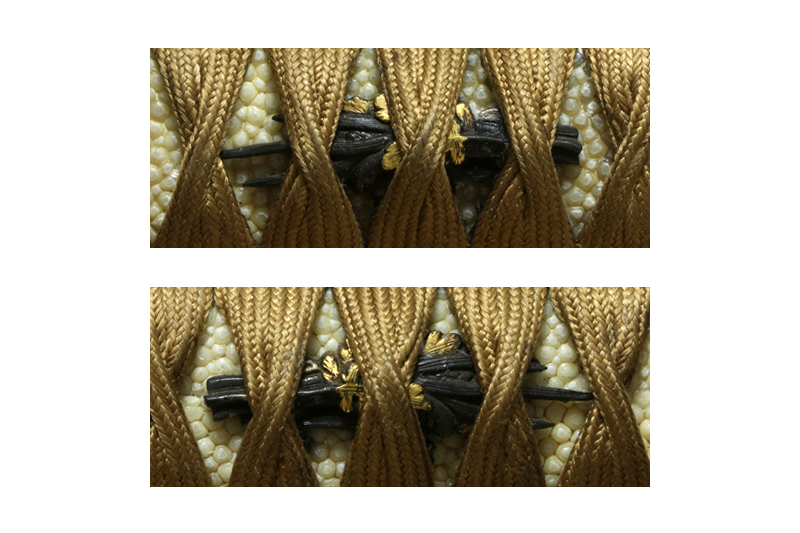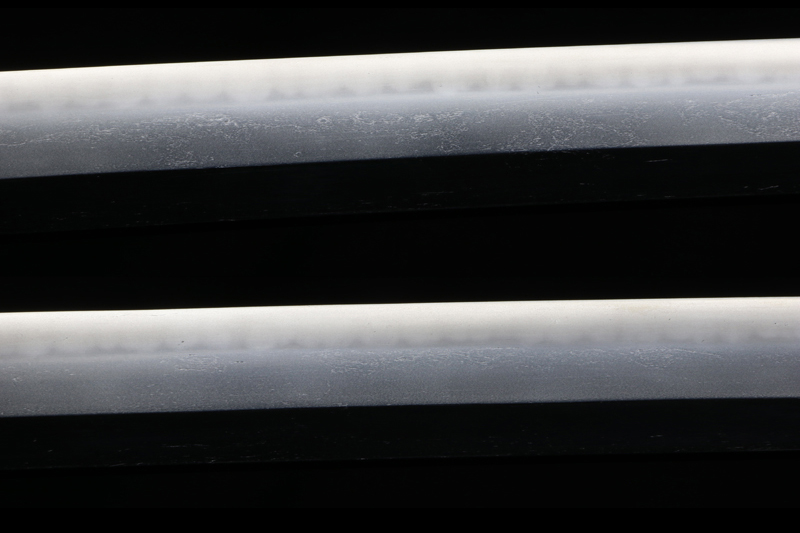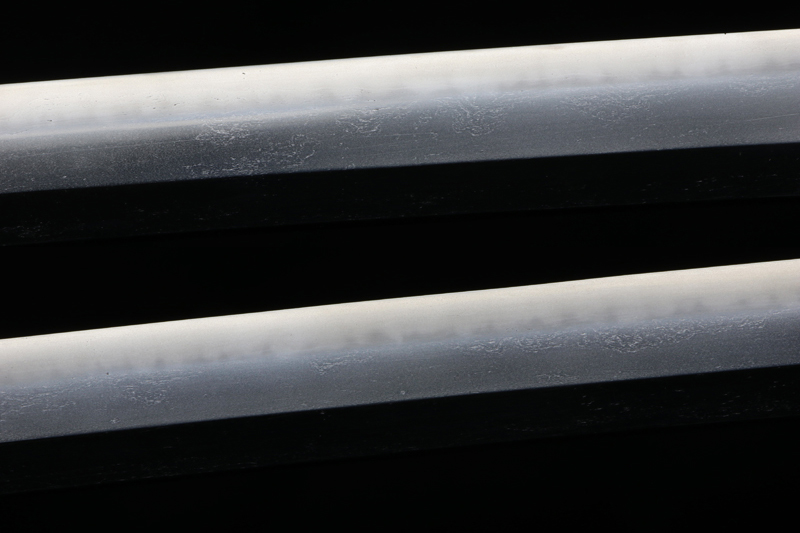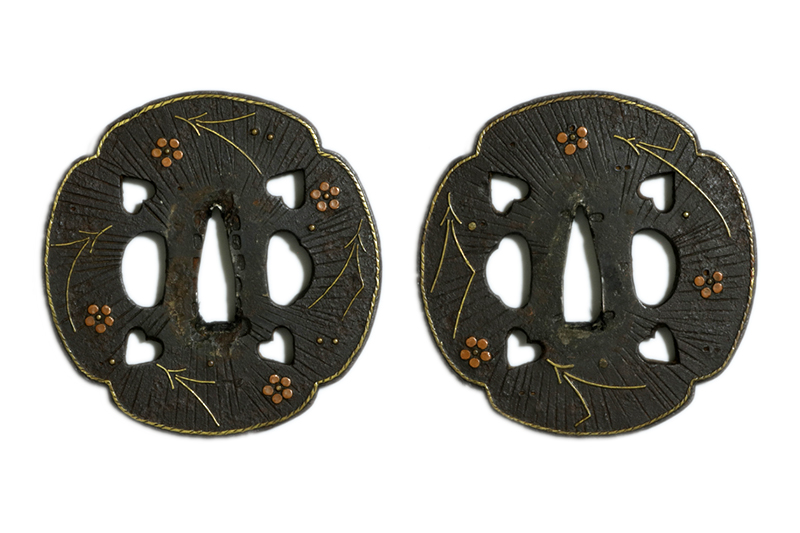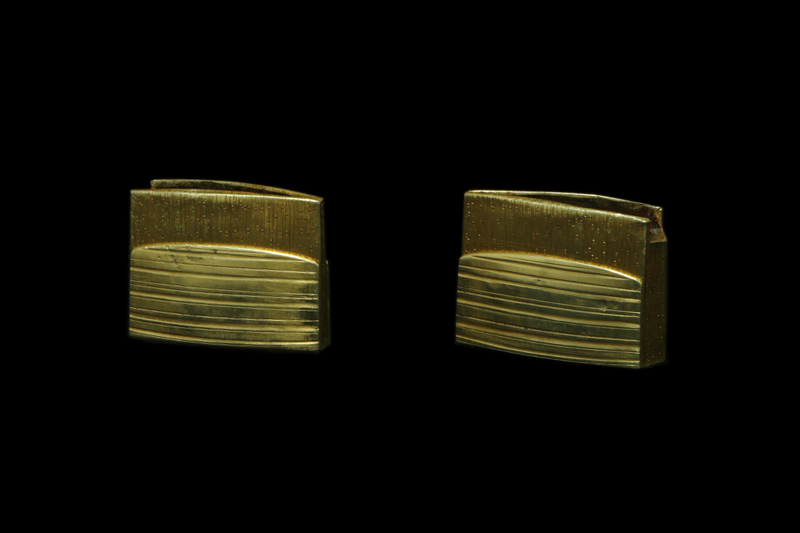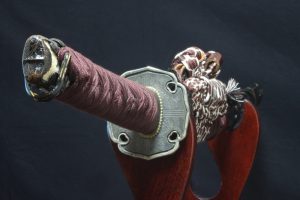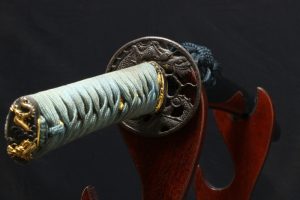説明
「刀姿 sword figure」
鎬造り庵棟、身幅やや細く重尋常、鳥居反り中鋒。茎は磨り揚げられ、筋違い鑢がかかり、茎尻は一文字に切られる。
「地鉄 jigane」
地鉄は板目肌が流れ心となり、肌立、地沸付く。
「刃紋 hamon」
刃紋は互の目、刃縁砂流しかかり、刃中は金筋が入る。釯子は乱れ込み小丸に返る。
「特徴 detailed」
兼植は室町時代後期の刀工で、美濃国関の出身です。彼は朝倉義景の招聘により越前の一乗谷へ移住し、兼法らとともに作刀を行いました。
朝倉氏滅亡後は北ノ庄(現在の福井市)へ移り、子孫は福井城下で江戸時代を通じて作刀を続けました。
本作は初代兼植の作品です。美濃関で作られたものか、一乗谷へ移住した後に作られたものかは定かではありませんが、戦国時代(室町時代後期)に打たれた太刀であることは間違いなく、江戸時代に磨り上げ(短く調整され)られ、打刀として仕立て直されたものです。
磨り上げられてはいるものの、依然として二尺三寸四分(約70.9cm)の堂々たる長さを誇ります。地鉄は美しく精緻に鍛えられ、細やかな互の目刃文が見事な逸品です。
さらに、大磨り上げにより茎(なかご)が長くなり、バランスが良いため、居合での使用にも適しています。戦国時代に作られた刀を居合で抜けば、当時の武士たちの息吹を感じることができるでしょう。
Kanetsue was a swordsmith of the late Muromachi period, originally from Mino-Seki. He moved to Ichijodani in Echizen at the invitation of Asakura Yoshikage, where he worked alongside other smiths such as Kanehō.
After the fall of the Asakura clan, he relocated to Kita-no-sho (present-day Fukui City), where his descendants continued to forge swords throughout the Edo period in Fukui Castle Town.
This piece is a work of the first-generation Kanetsue. While it is unclear whether it was forged in Mino-Seki or after his relocation to Ichijodani, it is undoubtedly a tachi from the Sengoku period (late Muromachi) that was later shortened (suriage) and reshaped into a katana during the Edo period.
Despite being shortened, the blade still retains an impressive length of 2 shaku 3 sun 4 bu (approximately 70.9 cm). It features a beautifully refined jigane with a delicate gunome hamon, making it an outstanding work.
Additionally, due to the significant suriage, the nakago remains long, providing excellent balance, making it suitable for iaido practice. Drawing a sword from the Sengoku period during iaido will allow one to feel the spirit of the samurai warriors of that time.
「拵 Koshirae」
拵の状態は良く、居合で使っても心配ないです。
白鞘、つなぎは有りません。
ハバキ(habaki) :素銅地金着二重。
鍔(tsuba) :鉄地太刀鍔梅の図。
縁頭(futikasira):赤銅地菊の図。
目貫(menuki) :赤銅地花束の図。
柄(tsuka) :鮫は親粒が付き巻鮫。柄巻は正絹金茶色の諸撮み巻。
鞘(saya) :春慶塗。
「刀剣の状態 condition of blade」
研:良好です。
傷:欠点になるような傷は有りません。
